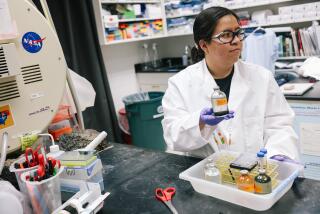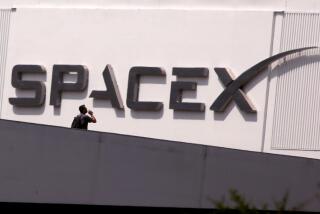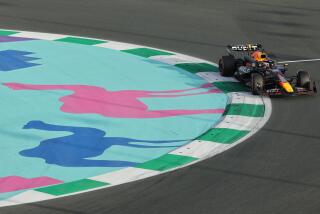Where do SpaceX and other aerospace companies find engineers? On the race track

The Formula SAE car-building competition has become a recruiting ground for aerospace firms such as SpaceX and Scaled Composites. (Brian van der Brug / Los Angeles Times)
- Share via
Over the last decade, entrepreneurial space companies in Southern California have set their sights on such goals as launching small satellites, carrying space tourists and colonizing Mars.
As they hire numerous young engineers, those companies and more traditional aerospace giants are finding talent in an unlikely place: a college race-car competition.
Next week, 100 university teams will bring their prototype race cars to the Formula SAE (Society of Automotive Engineers) competition in Lincoln, Neb., where they will be judged on design, manufacturing, performance and business logic.
The aerospace leaders who help judge the contest say it’s also an opportunity to see students explain design and production decisions, present their business cases and adapt on the fly.
“Race cars and rockets are pretty similar,” said Bill Riley, a Formula SAE alumnus from Cornell and competition judge who’s now a senior director of design reliability and vehicle analysis at SpaceX. “It’s lightweight, efficient, elegant engineering. Those basic principles are the same, no matter what you’re designing.”
SpaceX has had “fantastic success” recruiting new hires and interns from Formula SAE teams, as well as from sister competition Baja SAE, which focuses on building an off-road vehicle, and other hands-on engineering competitions, said Brian Bjelde, the Hawthorne company’s vice president of human resources.
Out of the 700 students who intern at SpaceX each year, about 50 or 60 come from Formula SAE. And as of three years ago, about 50% of the company’s 300-person structures team had worked on some sort of project-based design team in college.
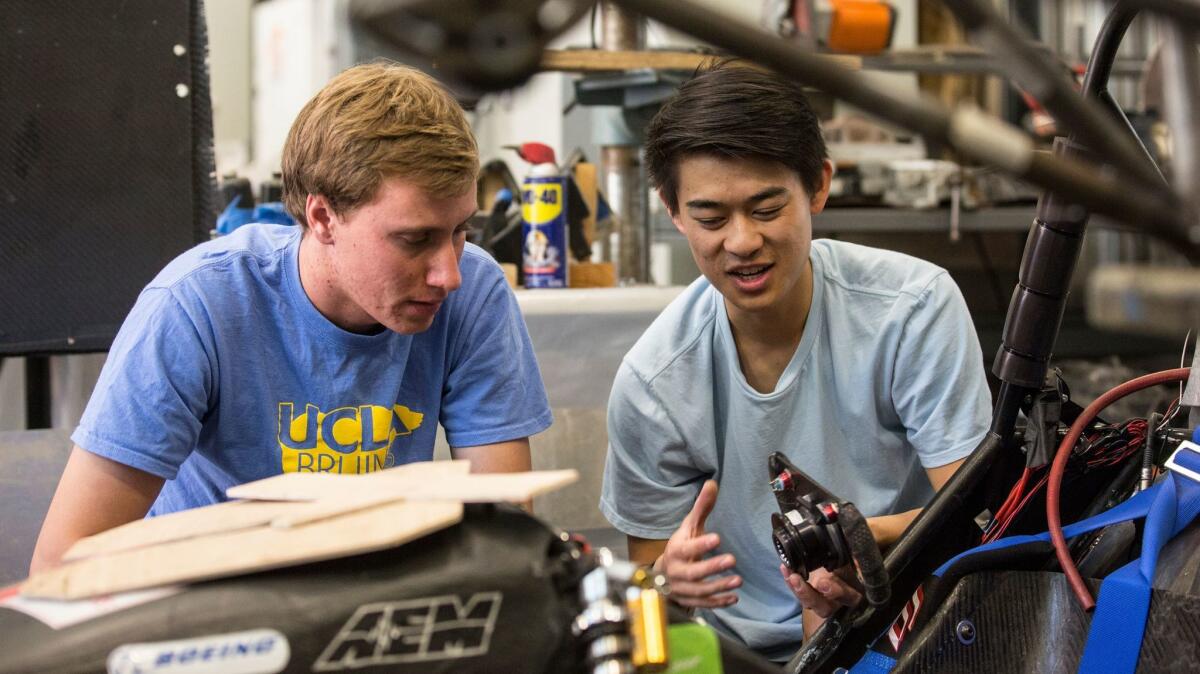
“For any candidate, the ones that are most successful at SpaceX have a combination of passion, drive and talent,” Bjelde said. “And to me, [Formula SAE] plays into the passion piece.”
Aaron Cassebeer experienced the highs and lows of competition firsthand 10 years ago as captain of a Lehigh University team that captured several design awards at competitions. But when a hose came loose and spilled oil into the car’s chassis, a few drips landed on the track and the Lehigh team was disqualified.
It all ended well for Cassebeer, though. His work with light, composite materials eventually impressed Scaled Composites, a cutting-edge Mojave aerospace firm. That led to a nine-year career where, among other things, he designed flight controls for an early version of the space plane that Virgin Galactic aims to use to fly tourists to space.
“The type of work I did happens to fit in really well with what Scaled Composites does — design and prototype, over and over again,” Cassebeer said.
The basis of the Formula SAE competition is that a fictional manufacturing company contracts teams to build a prototype race car that is low-cost, high-performance, easy to maintain and reliable.
Industry judges grill students on the design process, scrutinize their cost sheets and inspect the vehicles to make sure they are technically sound. The internal combustion engine car competition is the most popular, though an electric vehicle contest was added in 2013.
Race cars that pass technical inspections get the green light to hit the course for performance trials, testing things such as maneuverability, acceleration and endurance.
During the endurance test, two people drive the car around a course marked by traffic cones for a little more than 13 miles, which can take about half an hour and involves a driver switch. Many teams, such as UCLA’s, have a hard time finding a large, open space for testing, meaning the endurance test could be one of the few times the car runs that long without breaks.
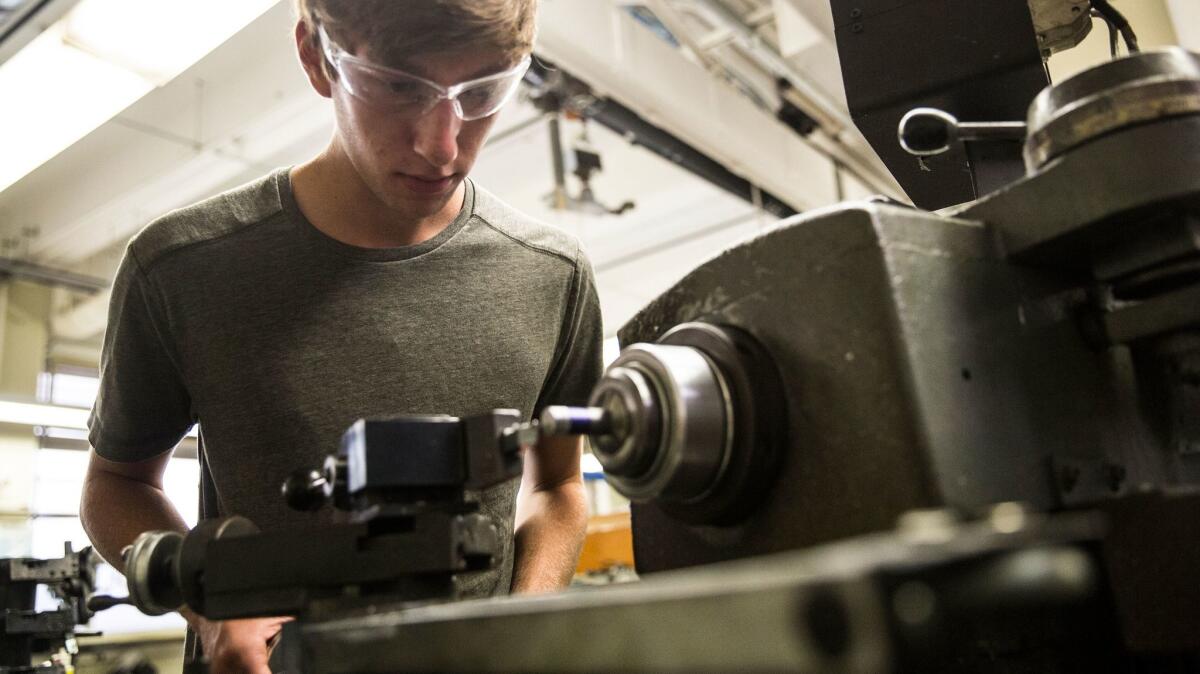
“The great thing about [Formula SAE] is it’s a full production cycle,” said Dolly Singh, SpaceX’s former head of talent acquisition who now serves as chief executive of high-heel designer Thesis Couture. “These kids build the car from scratch. They have to test in a high-pressure situation and see how it performs.”
Preparing for the competition gives students a taste of the grind that goes into meeting real-world project deadlines.
David Hernandez, 21, laughed when asked how many hours he and other members of the Cal Poly Pomona Formula SAE team have spent working on their car.
“Last night, I left early, and that was at 10 p.m.,” said Hernandez, a fourth-year aerospace engineering student.
Cal Poly Pomona has done well in the competition. Last year, the team’s sleek, green vehicle with an aerodynamic wing placed third overall in Lincoln, the highest of any California team there.
The Cal Poly shop, which is on the base floor of an engineering building and is shared with the Baja SAE team and other clubs and project teams, is crammed with tools, machinery and previous years’ cars.
The team’s 2014 car is encased in glass at the front of the engineering school along with a number of trophies. That car placed fourth in Lincoln and ninth in an international Formula SAE competition.
Hernandez applied his software knowledge, acquired through classes and Formula SAE, to his internship last summer at Raytheon Co. He uses the same software to analyze data points from the team’s car.
“There are very few times you feel as passionate about the same thing,” Hernandez said of the group’s camaraderie. “There’s nothing better than this.”
Scaled Composites, which is now part of Northrop Grumman Corp., has mentored a handful of Southern California teams, including UCLA’s, and recruited students in their shops for full-time jobs or internships. Several of the company’s engineers have also volunteered to offer feedback ahead of the competitions.
Scaled Composites is particularly interested in students who work on design and analysis.
“We do look for engineers that are hands-on,” said Kelsey Gould, executive assistant to the company’s vice president of engineering. “They’re really committed to figuring things out on their own.”
As the competition nears, pressure mounts.
Each Saturday for the last few months, about 30 members of the UCLA Formula SAE team pumped up the music in their ground-floor shop on campus and worked almost all day on their car. That’s in addition to the hours they spend there in between classes.
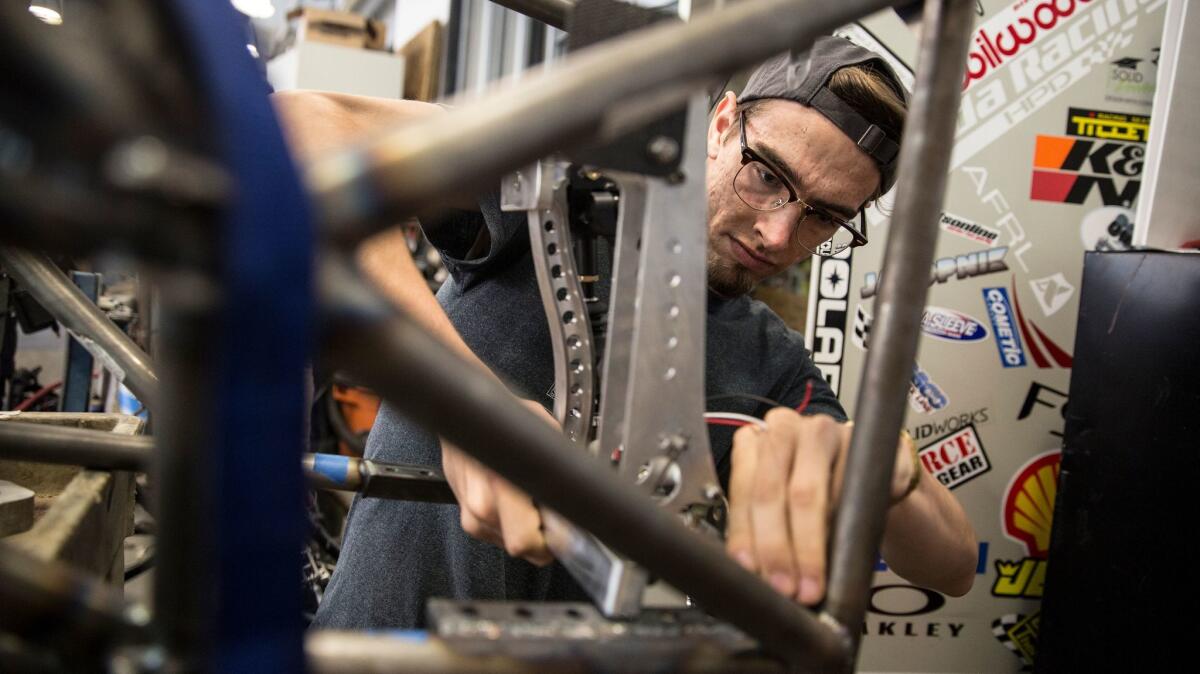
The UCLA team has already made several changes to avoid challenges it ran into last year, when it finished 59th out of 80 teams. A new, tunable muffler has been added that should help the team pass a sound requirement during the technical inspection. Last year, UCLA just barely passed that test by using a special exhaust plug and two mufflers packed with steel wool to deaden the sound.
Students on the team get greater hands-on engineering experience than they might in academic classes, said Owen Hemminger, 20, a mechanical engineering student and financial director of UCLA’s team.
Everyone learns how to use engineering software and do machining in school, “but not to the depth we use it,” he said.
Dan Rivin, 22, said his experience making steering wheels and driver’s seats for UCLA’s cars prepared him for an internship at Northrop Grumman, where he worked extensively with composites.
Last fall, the materials engineering student, who graduated this spring, gave a Northrop recruiter a tour of UCLA’s Formula SAE shop. Later, the recruiter asked Rivin for a resume. After several interviews, he was offered a full-time job with the aerospace giant and will start at the end of this month.
He said his work with Formula SAE came up in a number of interviews. He’s convinced it got him onto recruiters’ radar screens.
“This is very unique in the way that you’re involved in the entire process,” he said. “No one’s holding your hand through the whole thing.”
Twitter: @smasunaga
More to Read
Inside the business of entertainment
The Wide Shot brings you news, analysis and insights on everything from streaming wars to production — and what it all means for the future.
You may occasionally receive promotional content from the Los Angeles Times.
